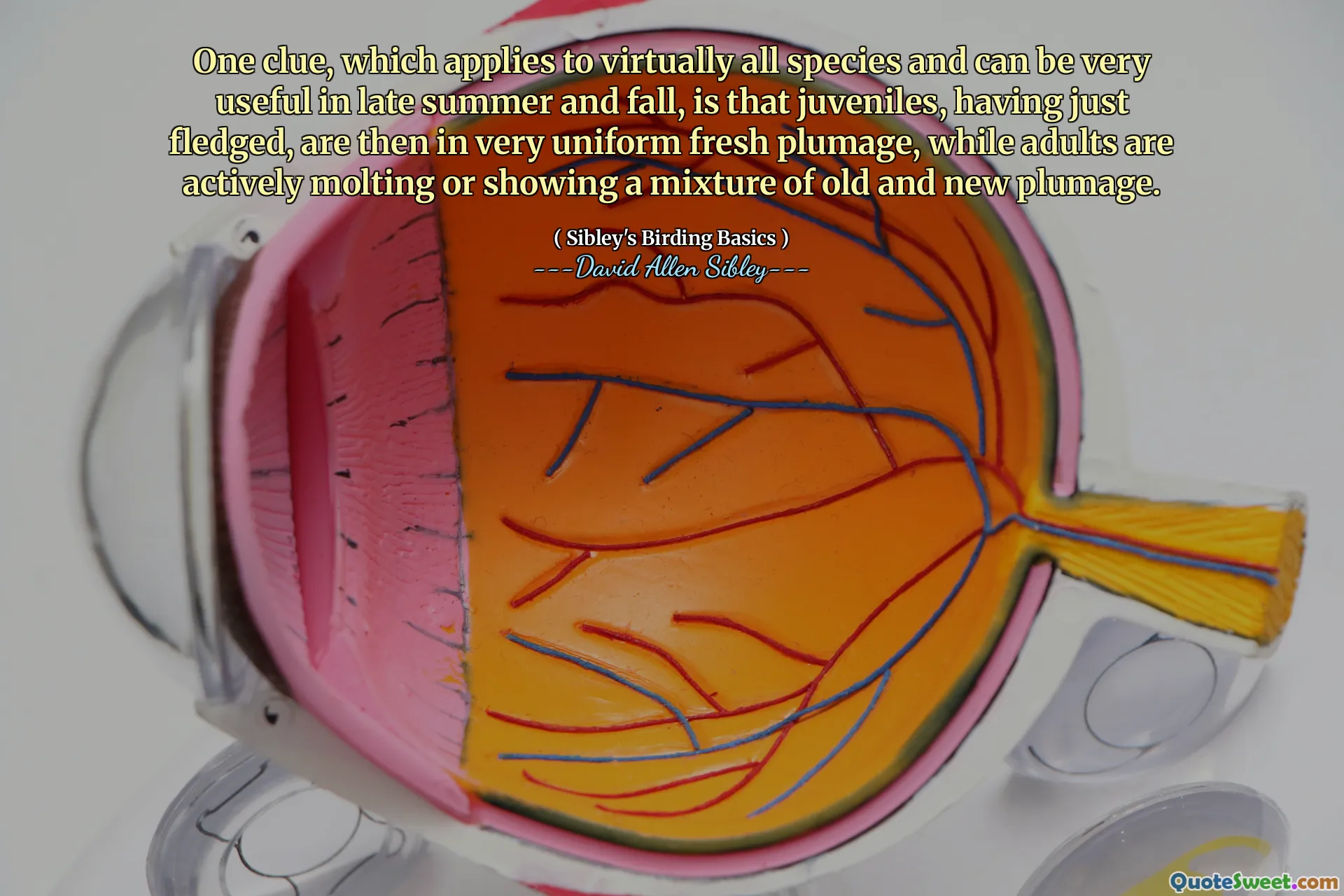
One clue, which applies to virtually all species and can be very useful in late summer and fall, is that juveniles, having just fledged, are then in very uniform fresh plumage, while adults are actively molting or showing a mixture of old and new plumage.
This quote underscores a fascinating and practical aspect of bird identification and observation, as highlighted in David Allen Sibley's "Sibley's Birding Basics." It reveals an effective method for distinguishing juvenile birds from adult birds during particular times of the year — specifically late summer and fall. Understanding plumage differences plays a crucial role in the study and appreciation of birds because precise age identification can inform us about behavior, vocalization patterns, migration, and ecological dynamics.
The emphasis on juveniles having "very uniform fresh plumage" is insightful because it primes bird watchers to look for consistency and newness in feathers when spotting young birds. Conversely, adults undergoing molting exhibit a more heterogeneous appearance due to the overlapping of newly grown and older feathers. This nuanced but conspicuous difference acts as a natural timeline, revealing not just the age, but also the physiological state of adult birds as they prepare for changing seasons.
Moreover, this detail from the book exemplifies the meticulous attention required for effective birding. Many species share common traits, making age and plumage status an important differentiator. It encourages a deeper engagement with bird watching, moving beyond mere sightings to detailed observations that contribute to citizen science and bird conservation efforts.
In a broader sense, this insight highlights nature's rhythms and transformation, reminding us how subtle visual cues can convey rich information. Sibley’s approach underlines the blend of art and science in birding—recognizing patterns and changes in plumage is both a skill and a joy for naturalists and biologists alike.






